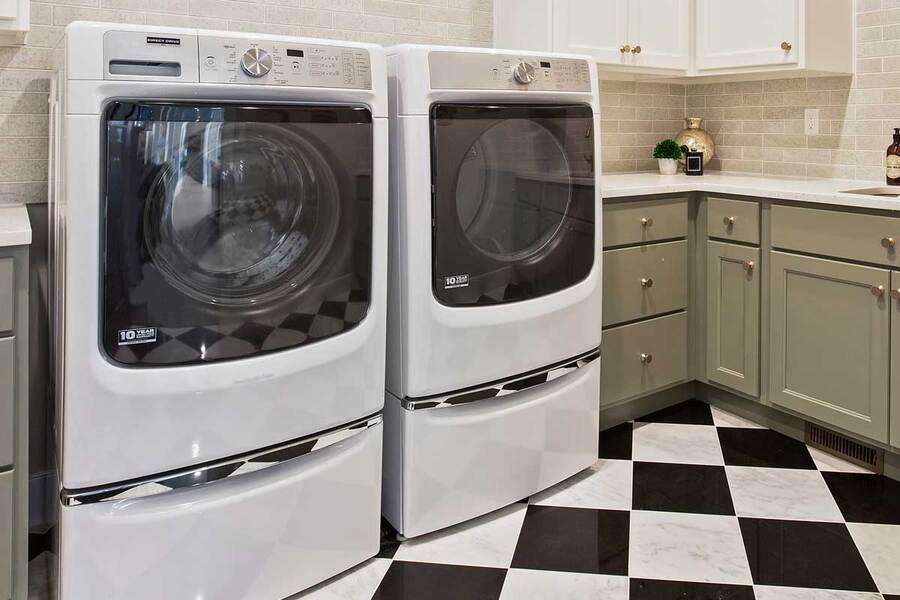The Pros and Cons of a Ventless Dryer

May 02, 2022
A dryer is one of those appliances that many homeowners consider essential. A dryer removes moisture from clothing, towels, and other items after they are washed in a washing machine. A dryer typically consists of a drum that rotates, a heating element, and a fan to circulate the air inside the drum. Most traditional dryers use electricity to heat air blown into the drum. Most ventless dryers use natural gas or propane to heat air before being blown into the drum. The following are some of the pros of a ventless dryer:
More Efficient
The main advantage of a ventless dryer is that it's more energy-efficient than a vented dryer. A vented dryer sends hot air out of a hose to the outdoors, which means it has to use more energy to heat that air as it dries your clothes. A ventless dryer recycles the hot air in the drum, so it doesn't need to use as much energy to keep heating the air. Ventless dryers are also smaller than their vented counterparts, making them less space in your laundry room.
Easier Installation
A ventless dryer is easier to install than a traditional vented one because you don't have to run a vent hose through your wall and into the exterior of your home. You can put a ventless dryer almost anywhere there's space in your home without worrying about where the nearest outside wall is located or whether you have enough room for ductwork around your washer and dryer.
Your clothes are treated better in a ventless dryer
Vented dryers use hot air to remove moisture from clothes, making the clothes feel hot and rough. These dryers use cold water instead of hot air, so your clothes do not feel hot or rough when they come out of the dryer. They can also cause static cling because of the high heat to remove moisture from your clothes. The dryers do not use heat to remove moisture, so static cling is never an issue. In addition, ventless dryers extract all the water from your clothes instead of drying them using a constant flow of hot air, which means that your clothes will be much less wrinkled when they are finished drying. As much as the dry is advantageous, it also has some disadvantages as outlined below: Additionally, the dryer has a few cons that make it less appealing than a traditional dryer setup:
Flammable
Ventless dryers are more likely to catch on fire. They have a lower flammability tolerance than traditional vented dryers, especially if they're packed with clothes and other materials.
Not very effective in drying clothes
Clothes may not dry completely in the amount of time you're used to. Ventless dryers aren't as effective at drying clothes as traditional models, so you may need to run them for extended periods or do multiple rounds of drying to get your clothes dry thoroughly. This can be frustrating, especially for people who are used to traditional vented dryers.
Mold and Bacteria
As traditional units do, ventless dryers do not vent their hot air outside. Instead, this air is released back into the dryer's room. As a result, lint and other fibers may be released into the room along with the hot air. If this lint builds up and comes into contact with moisture in the air, it can become a breeding ground for mold and bacteria. This can pose a severe health risk to people living in the home, especially those allergic to mold spores.
Structural Damage
The build-up of moisture in a home can also cause structural damage to walls, ceilings, and floors. The more prolonged moisture remains in an area of a home, the greater the chances that it will cause damage to this area's structure. In addition to mold growth, moisture can also cause paint and wallpaper to peel away from walls, wooden floors to buckle, and metal pipes to rust.
If you need help with your appliances, Volt Appliance Repair can assist you. You can trust to our experts for professional maintenance and repair services. To get started you can request a call, or give us a call at (888) 285-7957.
Categories
Archives